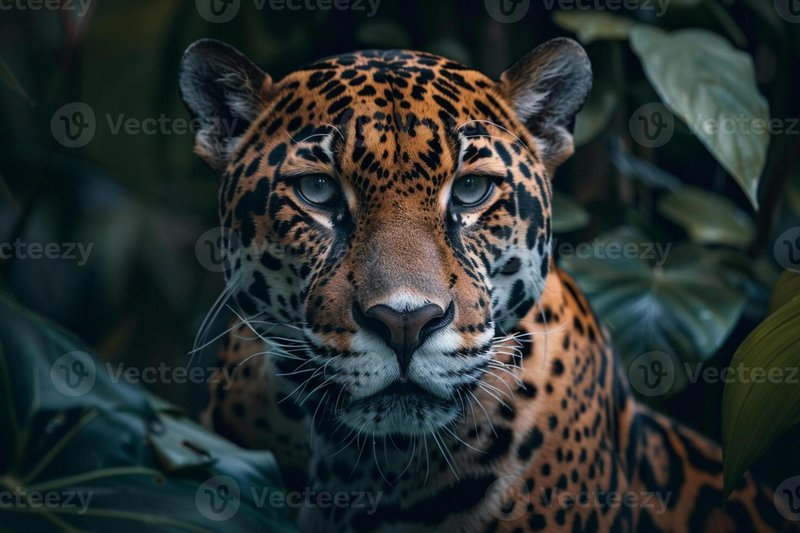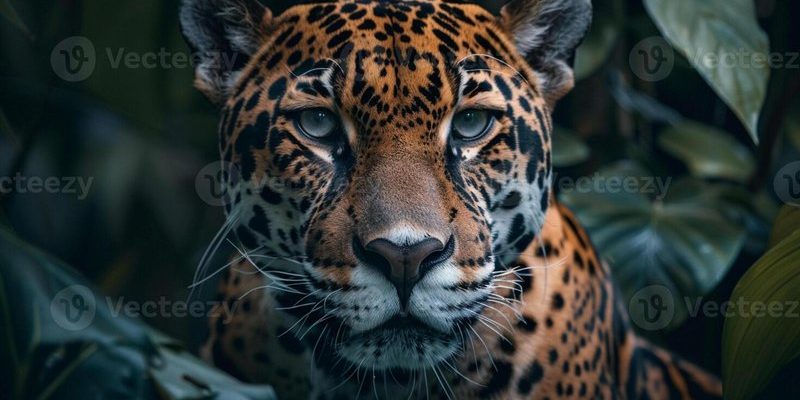
Let’s sip our coffee and dive into the myths about jaguars. These big cats are fascinating and complex, yet many people may not fully appreciate who they are beyond their striking appearance. Whether it’s their behavior, habitat, or status in the ecosystem, uncovering the truth about jaguars is essential for their conservation and our understanding of nature.
Myth 1: Jaguars Are Just Like Leopards
You might have heard people say that jaguars and leopards are practically the same. Honestly, while they share some similarities, they are distinct species with unique traits. Both belong to the *Panthera* genus, but jaguars are found primarily in the Americas, while leopards are native to Africa and parts of Asia.
Let’s look a bit closer. Jaguars are known for their powerful build and robust jaws, designed for crushing bones and shells. This means they often hunt larger prey, like caimans and capybaras. In contrast, leopards tend to go after smaller animals and are often more adaptable, using trees for cover. The difference in their hunting habits reflects their environmental needs and predatory strategies.
Additionally, their coat patterns are unique! Jaguars have a distinctive arrangement of rosettes with central spots, while leopards have smaller rosettes without central spots. So, next time you see a cat with beautiful markings, remember that it’s not just a pretty coat; it tells a story of survival and adaptation.
Myth 2: Jaguars Are Extremely Aggressive and Dangerous
You might be wondering if jaguars are out to get us. The truth is, they do have a reputation for being fierce hunters, but that doesn’t mean they are inherently aggressive toward humans. In fact, jaguars are quite shy and tend to avoid human contact whenever possible.
When you think about it, many big cats hunt primarily to survive. Jaguars mostly feed on wild animals, and their aggression is reserved for hunting rather than for attacking humans. Incidents involving jaguars attacking people are rare and usually occur when the animals feel threatened or cornered. Essentially, they’d rather keep to their own territory, lurking quietly in the shadows of dense forests.
It’s important to recognize that as humans encroach on their habitats, conflicts can arise, but the issue often lies in our actions rather than their nature. By understanding this, we can work towards coexistence and respect for their space.
Myth 3: Jaguars Are Going Extinct
Many people believe that jaguars are on the brink of extinction. While it’s true their numbers have declined due to habitat loss and poaching, they are not classified as critically endangered. Instead, they fall into the “Near Threatened” category on the IUCN Red List, which means they are at risk but still have populations scattered throughout their range.
Conservation efforts are underway to protect jaguar habitats and ensure their survival. Wildlife corridors, protected areas, and community education programs play a crucial role in safeguarding these majestic creatures. Organizations are also working to combat illegal hunting and promote sustainable land use practices to benefit both jaguars and local communities.
So, while we can’t afford to become complacent, there’s hope! The fact that there are dedicated people and initiatives working toward the jaguar’s recovery is a positive sign.
Myth 4: Jaguars Are Loners
Here’s the thing: while it’s true that jaguars are typically solitary animals, it doesn’t mean they aren’t capable of forming social bonds. Adult jaguars usually prefer to live alone, coming together only to mate or when a mother is raising her cubs. They have extensive territories that they patrol, marking them with scent to keep others at bay.
However, they’re not completely antisocial. Mothers play a significant role in the lives of their cubs, teaching them vital hunting skills and how to navigate their environment. These relationships are crucial for the survival of the next generation, showing that, at least in their early years, social interactions can be quite significant.
So, while you might spot them perusing their solitary paths through the jungle, there’s a nurturing side to these big cats that is often overlooked.
Myth 5: All Jaguars Live in the Rainforest
When picturing jaguars, many of us envision them lounging majestically among the trees of the Amazon rainforest. But here’s the kicker: jaguars are adaptable and can thrive in various habitats, including savannas, wetlands, and even dry forests. They’re not just rainforest dwellers!
Take the Pantanal, for instance. This vast wetland in Brazil is home to one of the highest concentrations of jaguars in the world. Here, they hunt in the marshy terrain, showcasing their ability to adapt to different environments. The thing is, their survival depends on the availability of prey and water, not just the type of forests they call home.
Understanding their habitat preferences helps in habitat conservation efforts, ensuring these magnificent creatures have a place to roam and thrive, no matter where they are.
Myth 6: Jaguars Are Only Found in One Place
Another common misconception is that jaguars are only found in a specific region. While many people associate them with the Amazon, jaguars actually range across a vast geographical area—from the Southern United States down to Argentina. They inhabit diverse ecosystems, which is pretty impressive when you think about their adaptability.
These big cats can be found in various countries including Mexico, Brazil, Colombia, Peru, and even parts of the Caribbean islands. Their range has been gradually shrinking due to human activities, making it crucial to protect the existing populations and their habitats across these regions.
To truly appreciate jaguars, we need to recognize the full extent of their habitat and work on preserving it. After all, they play an essential role in their ecosystems as top predators, helping to maintain the balance of nature.
Myth 7: Jaguars Can’t Swim
As you might have guessed, many people think that jaguars aren’t fond of water, but that couldn’t be further from the truth! In fact, jaguars are strong swimmers and often take to the water to hunt for prey like fish and caimans. Imagine this: a powerful jaguar gracefully gliding through the river, showcasing its strength and agility—that’s the reality!
Their love for water gives them a unique advantage compared to other big cats. While many felines may avoid water, jaguars embrace it. They’ve adapted to their environments in ways that allow them to thrive both on land and in the water. With their muscular bodies and unique hunting techniques, they can catch prey both on the bank and beneath the surface.
So, the next time you hear someone say that jaguars don’t swim, just think of the incredible versatility these big cats possess. They’re much more than land dwellers.
Understanding jaguars means peeling back the layers of myths and misconceptions that surround them. These majestic creatures are not just fierce hunters but also complex, adaptable beings worthy of respect and protection.
By debunking these myths, we can foster awareness about the challenges they face and the importance of conservation. They deserve a place where they can roam freely, and every step we take to protect their habitats contributes to a brighter future for these magnificent cats.
So, whether you’re an animal lover or just someone curious about the natural world, remember that jaguars are much more than what movies and myths portray. They are symbols of strength, beauty, and resilience in the wild. Let’s celebrate and protect them!

